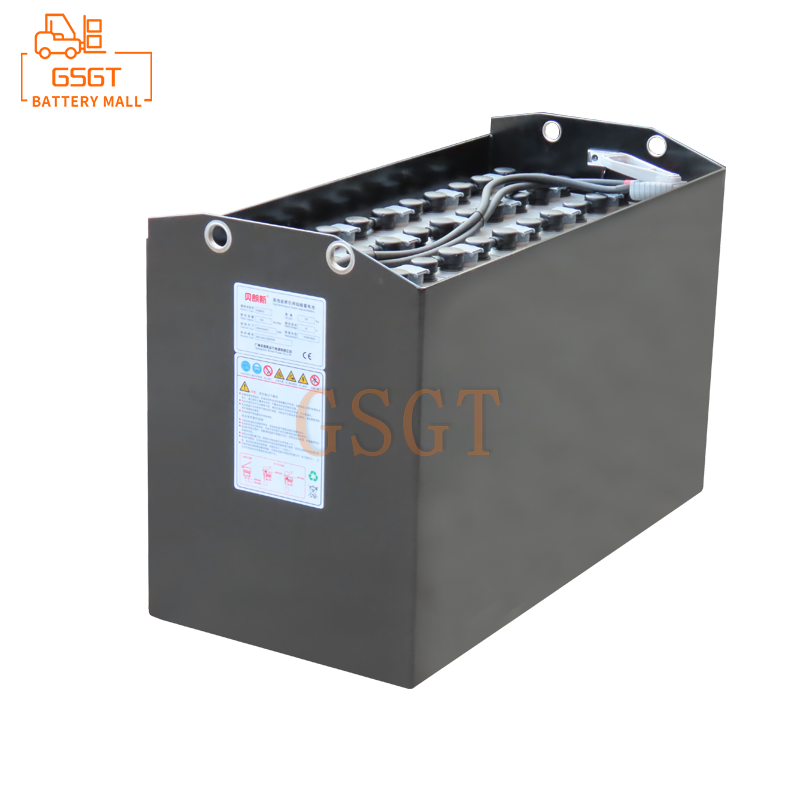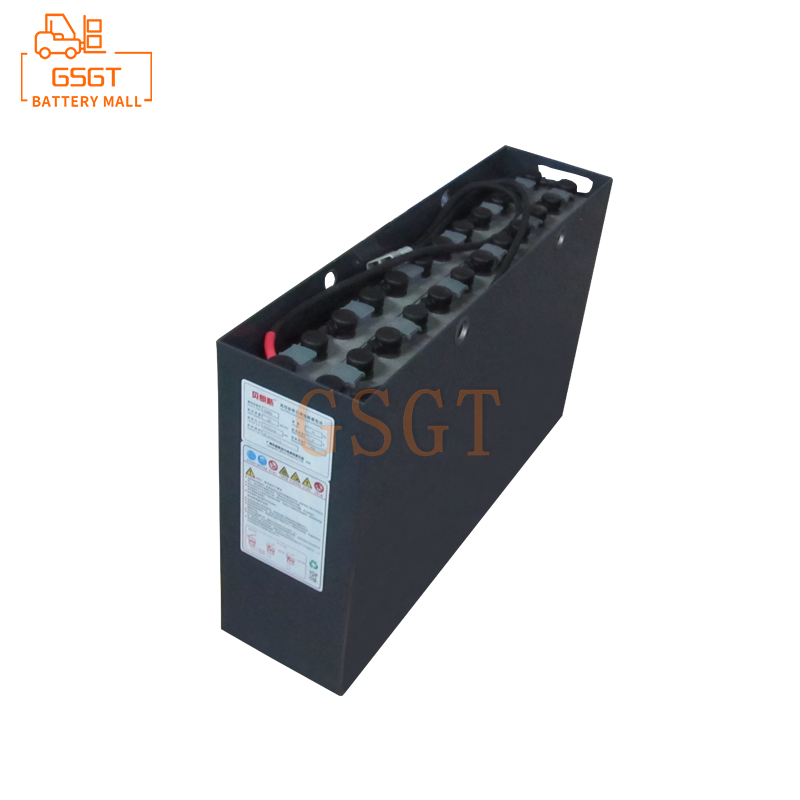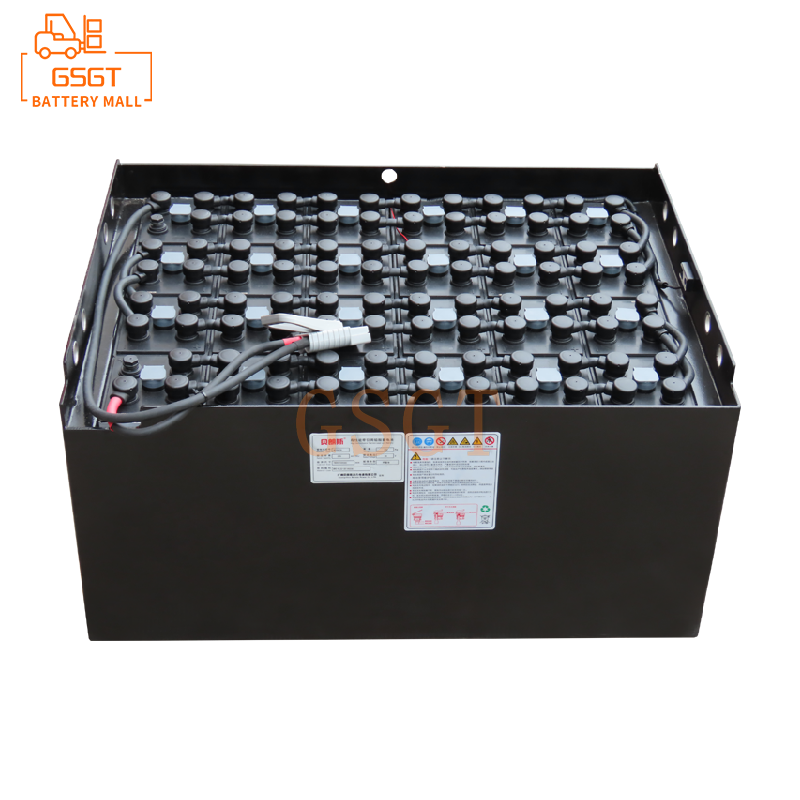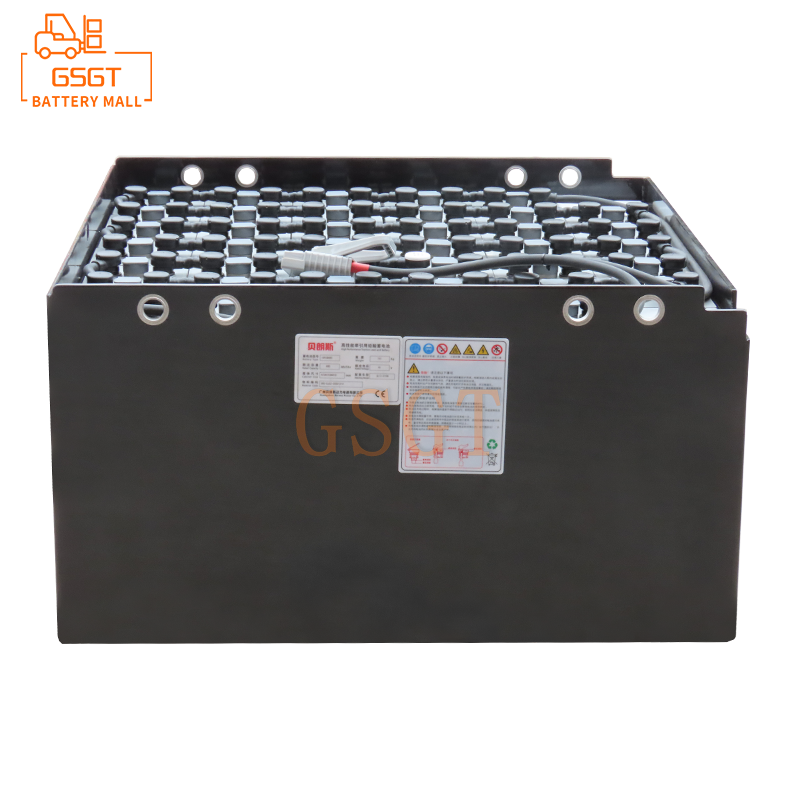Time:2025-06-11 16:12:01
Browse:582
Introduction
In the fields of modern logistics and industrial production, forklifts, as a key material handling equipment, their efficient and stable operation is crucial for ensuring the smoothness of the production process. Lead-acid batteries are widely used in forklift power sources due to their advantages such as low internal resistance, stable voltage, low cost and good starting performance. However, as the usage time of forklifts increases and the working environment changes, the internal resistance of lead-acid batteries will change, which will have a significant impact on the starting performance of forklifts. An in-depth study of the influence mechanism of the internal resistance of lead-acid batteries on the starting performance of forklifts is of great significance for optimizing the usage efficiency of forklifts, extending the service life of batteries and reducing operating costs.
An overview of the internal resistance of lead-acid batteries
The formation and composition of internal resistance
The internal resistance of lead-acid batteries refers to the resistance that current encounters when flowing through the battery during operation. It is mainly composed of two parts: ohmic internal resistance and polarization internal resistance. The ohmic internal resistance includes the resistance of the battery plates, separators, electrolyte and the connecting components of each part. Its magnitude mainly depends on the physical properties and geometric dimensions of these materials. For instance, factors such as the thickness and area of the plates, the concentration and temperature of the electrolyte, and the distance between the electrodes all affect the magnitude of the ohmic internal resistance. The polarization internal resistance includes the electrochemical polarization internal resistance and the concentration polarization internal resistance. Electrochemical polarization internal resistance is generated due to the reaction sluggishness when electrochemical reactions occur on the electrode surface during the charging and discharging process of the battery. Concentration polarization internal resistance is an additional resistance caused by the difference in ion concentration between the electrode surface and the interior of the electrolyte during battery operation, which limits the ion diffusion rate and leads to the formation of a concentration gradient on the electrode surface.
The influence mechanism of internal resistance on the starting performance of forklifts
The influence on the starting current
When a forklift starts, it needs to provide a large current instantaneously to drive the motor to operate, overcoming the inertia of the forklift itself and the goods it carries. According to Ohm's Law, in the forklift starting circuit, the internal resistance of the battery dominates. When the internal resistance of the lead-acid battery increases, with the battery's electromotive force remaining unchanged, the starting current in the circuit will significantly decrease. For instance, under normal circumstances, lead-acid batteries with relatively low internal resistance can provide hundreds of amperes of current for forklift starting. However, as the battery's internal resistance increases, the starting current may drop to a level that fails to meet the forklift's starting requirements, making it difficult or even impossible to start the forklift.
The influence on the starting voltage
During the startup process, the internal resistance of the battery will consume a portion of the voltage, reducing the voltage actually loaded across the forklift's starting motor. When the terminal voltage of the battery increases, the voltage across the internal resistance decreases, and the terminal voltage of the motor also drops. The starting torque of the motor is proportional to the square of the terminal voltage. Therefore, a decrease in terminal voltage will cause a significant drop in the motor's starting torque, making it unable to effectively drive the forklift to start. Moreover, it may prolong the motor's starting time and increase the risk of motor overheating and damage.
The influence on the starting power
The starting power, due to the increase in internal resistance, causes both the starting current and the starting voltage to decrease simultaneously. The product of the two leads to a significant reduction in the starting power. Forklift starting requires sufficient power to overcome the initial static friction force and inertial force. When the starting power is insufficient, the forklift will have difficulty starting smoothly and cannot be quickly put into work, seriously affecting the operation efficiency. Especially when the forklift is fully loaded or in a harsh working environment, the requirement for starting power is higher. At this time, the negative impact of the increased internal resistance of lead-acid batteries on starting performance will be more prominent.
The differences in the influence of internal resistance on the starting performance of forklifts under different working conditions
Normal working conditions at room temperature
Under normal temperature conditions and when the forklift load is normal, the internal resistance of lead-acid batteries is relatively stable and within the normal range. At this point, the battery can provide relatively stable current, voltage and power for the forklift to start. The forklift has good starting performance and can smoothly complete the starting process and enter the normal working state. However, as the battery usage time increases, even under such ideal working conditions, some irreversible chemical reactions will gradually occur inside the battery, such as sulfation of the plates, resulting in a slow increase in internal resistance and a gradual decline in starting performance.
Low-temperature working condition
When the ambient temperature drops, the internal resistance of lead-acid batteries will increase significantly. Generally speaking, for every 1℃ drop in temperature, the capacity of lead-acid batteries will decrease by approximately 0.8% to 1%, and at the same time, their internal resistance will increase. This is because at low temperatures, the viscosity of the electrolyte increases, the resistance to ion movement increases, the diffusion rate slows down, resulting in intensified concentration polarization and increased polarization internal resistance. In addition, low temperatures will also reduce the activity of electrode materials, slow down the electrochemical reaction rate, and further increase the electrochemical polarization internal resistance. In environments such as low-temperature warehouses, forklifts that could operate continuously for 8 hours at normal temperatures may encounter difficulties in starting due to increased battery internal resistance, reduced starting current, and decreased starting voltage. Even if they can start, their power and endurance will be significantly weakened, and the working time may be shortened to 6-7 hours.
High-temperature working condition
High-temperature environments can accelerate the internal chemical reactions of lead-acid batteries, leading to a faster rate of water loss and an increase in the concentration of the electrolyte. On the one hand, the change in the concentration of the electrolyte will affect its conductivity, increasing the ohmic internal resistance. On the other hand, at high temperatures, the side reactions inside the battery increase, and the active substances on the electrode surface are more prone to shedding and corrosion, further damaging the internal structure of the battery and increasing the polarization internal resistance. In addition, high temperatures may also cause thermal runaway of batteries, leading to battery damage and even safety accidents. Under high-temperature working conditions, when a forklift starts, due to the excessive internal resistance of the battery, the starting current and voltage are unstable, which seriously affects the starting performance and also significantly shortens the battery's service life.
Heavy-duty working condition
Under heavy-duty conditions such as forklift handling weights exceeding 3 tons, the discharge current is relatively large, which will intensify the chemical reactions inside the battery. When a large current is discharged, the sulfuric acid solution in the pores of the plate is rapidly diluted, while over 90% of the sulfuric acid molecules in the solution outside the plate pores do not have enough time to diffuse into the plate voids, resulting in an increase in the specific resistance of the solution in the plate pores and an increase in internal resistance. Meanwhile, the battery temperature rises, accelerating the consumption of the electrolyte and the corrosion of the plates. At this point, the increase in the internal resistance of the battery will lead to a further reduction in the starting current, and the starting voltage will drop more significantly. The larger power required for the forklift to start will be difficult to meet, making the starting process extremely challenging and even potentially causing permanent damage to the battery.
Measures to improve the impact of internal resistance of lead-acid batteries on the starting performance of forklifts
Select and maintain batteries reasonably
Correct selection: Based on the actual working requirements and conditions of the forklift, choose lead-acid batteries of appropriate capacity, specification and type. For instance, for forklifts that frequently need to operate under heavy loads or work in harsh environments, batteries with low internal resistance, high capacity and good temperature resistance should be selected to ensure that sufficient starting current and power can be provided under various working conditions.
Regular maintenance: Regularly inspect and maintain lead-acid batteries, including cleaning the battery surface and connection points to prevent dust, debris, etc. from increasing contact resistance. Check the density of the electrolyte and the height of the liquid level, replenish pure water or dilute sulfuric acid in time, maintain the normal concentration and liquid level of the electrolyte, and ensure the normal progress of the chemical reactions inside the battery. Regular charge and discharge maintenance should be carried out to prevent the battery from being in a state of low charge for a long time. Through appropriate charge and discharge cycles, the active substances on the battery plates can be activated, the internal resistance can be reduced, and the battery's service life can be prolonged.
Temperature management: In low-temperature environments, measures can be taken to heat and keep the battery warm, such as using battery heating pads or installing insulation covers, to increase the battery temperature, reduce internal resistance, and improve starting performance. In high-temperature environments, it is necessary to enhance the heat dissipation of the battery and prevent it from being exposed to high temperatures for a long time. This can be achieved by optimizing the ventilation system of the forklift to ensure good air circulation around the battery and prevent the battery from overheating, which could lead to increased internal resistance and performance decline.
Conclusion
The internal resistance of lead-acid batteries has a significant impact on the starting performance of forklifts in multiple aspects. Under different working conditions, changes in internal resistance will lead to alterations in starting current, voltage and power, thereby affecting the smoothness of forklift starting and the overall working efficiency. Through an in-depth analysis of the working principle, internal resistance composition and the influence mechanism on the starting performance of lead-acid batteries, combined with practical cases, the importance of this issue can be clearly recognized. In order to improve the influence of the internal resistance of lead-acid batteries on the starting performance of forklifts, comprehensive measures need to be taken from multiple aspects such as the reasonable selection and maintenance of batteries, the optimization of the electrical system of forklifts, and the strengthening of daily operation management. Only in this way can we ensure that forklifts have good starting performance under various working conditions, improve the reliability and economy of forklifts in use, and provide a strong guarantee for the efficient operation in fields such as logistics and industrial production. In the future, with the continuous development and innovation of battery technology, it is expected that new types of batteries with better performance, lower internal resistance and less affected by working conditions will emerge, bringing new changes to the power system of forklifts and further enhancing the overall performance and application scope of forklifts.

$2450

$1060

$5710

$5710

MESSAGE
Professional And Efficient
Security
Affordable Price
Professional Services